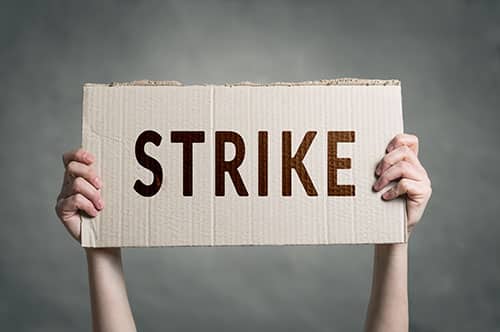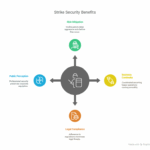In the contemporary world, labor strikes are not just an expression of workers’ dissatisfaction, but an emblematic representation of the socio-economic dynamics at play. We’ll provide a comprehensive overview of labor strikes, detailing key aspects and illuminating the myriad of reasons behind them.
Why Do Workers Go On Strike?
Strikes often result from various causes, primarily revolving around:
- Economic reasons: Seeking higher wages or benefits.
- Working conditions: Ensuring safer, healthier, and more conducive environments.
- Job security: Addressing fears of redundancy, especially in evolving industries.
- Political reasons: Protesting against specific policies or political environments that impact workers directly.
The Underlying Mechanism of Strikes
Stages of a Labor Strike
- Initial Grievances: Workers collectively identify issues they face.
- Deliberation with Union: A labor union becomes the primary medium of communication between the workforce and the employers.
- Negotiation: The union represents the workers in talks with the employer to resolve grievances.
- Strike Vote: If negotiations break down, the union might call for a strike vote.
- Strike Commencement: If the majority supports the strike, it commences.
- Resolution or Escalation: The strike ends either through mutual agreement or escalates to involve legal or governmental intervention.
Key Players in a Labor Strike
- Striking Workers: Those directly affected by the issues and leading the protest.
- Labor Unions: Act as representatives and negotiators for the workers.
- Employers: Companies or organizations where the workers are employed.
- General Public: Their perception can sway the outcome as public opinion holds weight.
- Government: Might intervene, especially if the strike affects public services or the nation’s economy.
The Impact of Strikes on the Economy
Labor strikes can have a profound effect on both micro and macroeconomic levels.
Short-term Impacts
- Productivity Drop: With workers not on the job, production levels drop.
- Loss in Wages: Striking workers often do not receive their regular pay.
- Increased Operational Costs: Employers might need to hire temporary workers or face other indirect costs.
Long-term Impacts
- Reputation Damage: Prolonged strikes can harm a company’s image.
- Economic Downturn: If a major industry is affected, it could lead to a broader economic slowdown.
- Policy Changes: Strikes can sometimes result in legislative changes, affecting the industry’s future.
Recent Strikes and Their Causes
As the global economic landscape shifts, so do the reasons for strikes. Here are some recent movements:
- Tech Industry Strikes: With the rapid growth of the tech sector, workers demand better wages, job security, and workplace culture.
- Healthcare Strikes: Healthcare professionals seek better working conditions, especially after the challenges posed by global health crises.
- Transportation Strikes: Often revolve around wage disputes, job security, and working conditions.
Final Thoughts
Labor strikes, as a reflection of the socio-economic climate, are intricate and multi-faceted. By understanding their causes, mechanisms, and impacts, we can better navigate the challenges and opportunities they present in the modern world.









